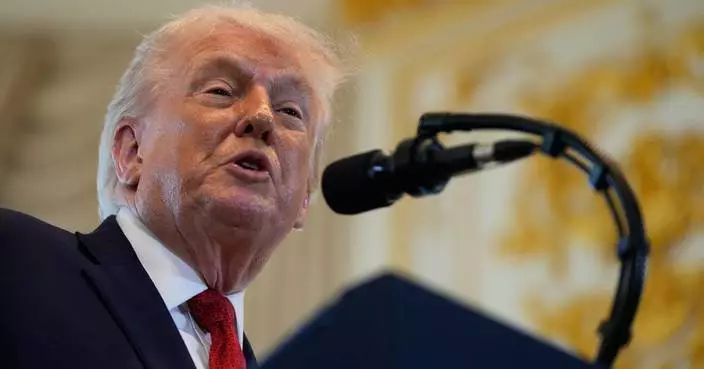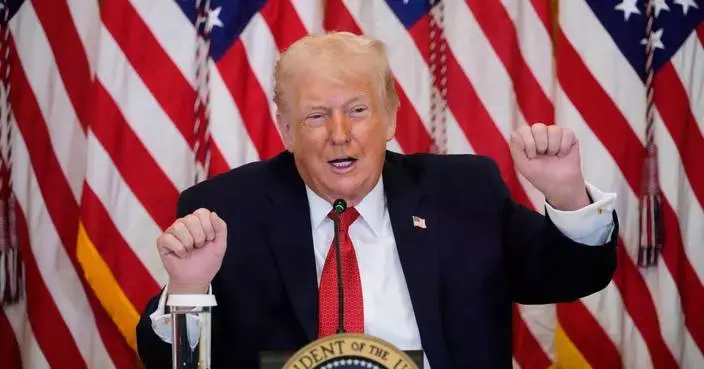Before there was Amazon — or, for that matter, Home Depot or Walmart or Kmart — there was Sears.
From its beginnings as a mail-order watch business in Minneapolis 132 years ago, the company grew to become America's everything-under-one-roof store and the biggest retailer in the world.
For generations of Americans, the brick-like Sears, Roebuck and Co. catalog was a fixture in just about every house — a miscellany of toys and clothes and furnishings and hardware that induced longing for this or that dream purchase. The Sears brand loomed as large over the corporate landscape as its 108-story basalt-like headquarters did over the Chicago skyline.
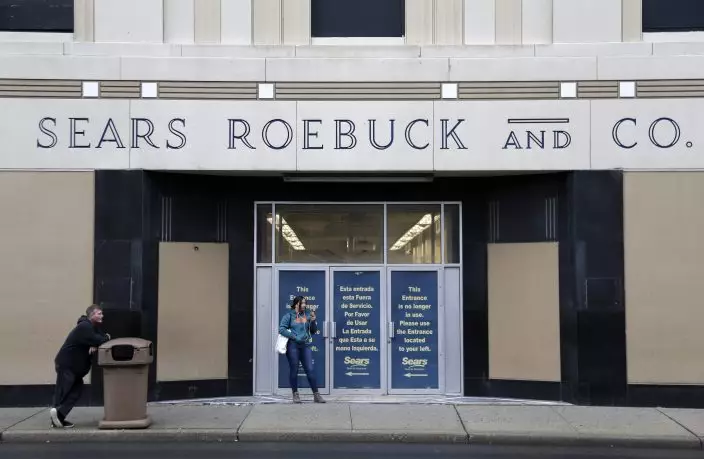
People stand outside a Sears department store in Hackensack, N.J., Monday, Oct. 15, 2018. Sears filed for Chapter 11 bankruptcy protection Monday, buckling under its massive debt load and staggering losses. (AP PhotoSeth Wenig)
"It was the Amazon of its day," said Mark Cohen, a professor of retailing at Columbia University and a former Sears executive.
But how the mighty have fallen: Plagued by falling sales and heavy debt, Sears filed for Chapter 11 bankruptcy reorganization Monday and announced plans to close 142 of its roughly 700 remaining stores and eliminate thousands of jobs in a bid to stay afloat, if only for a while.
Analysts have their doubts it will survive.
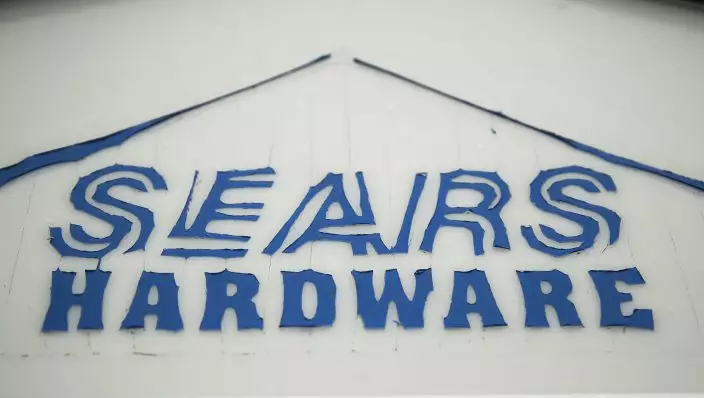
A sign for a Sears department store is displayed in Norristown, Pa., Monday, Oct. 15, 2018. Sears filed for Chapter 11 bankruptcy protection Monday, buckling under its massive debt load and staggering losses. (AP PhotoMatt Rourke)
"In our view, too much rot has set in at Sears to make it (a) viable business," Neil Saunders, managing director of GlobalData Retail, said in a note to investors.
Its bankruptcy was years in the making. Sears diversified too much. It kept cutting costs and let its stores become fusty in the face of increasing competition from the likes of Walmart and Target. And though it expanded onto the Internet, it was no match for Amazon.
"In point of fact," Cohen said, "they've been dead for a very long time."

A Sears department store is shown in Norristown, Pa., Monday, Oct. 15, 2018. Sears filed for Chapter 11 bankruptcy protection Monday, buckling under its massive debt load and staggering losses. (AP PhotoMatt Rourke)
In its bankruptcy filing, Sears Holdings, which operates both Sears and Kmart stores, listed assets of $1 billion to $10 billion and liabilities of $10 billion to $50 billion. It said it has lined up $300 million in financing from banks to keep operating and is negotiating an additional $300 million loan.
The company once had around 350,000 employees; as of Monday's filing, it was down to 68,000. At its peak, it had 4,000 stores in 2012; it will now be left with a little more than 500.
Sears was born in 1886, when Richard W. Sears began selling watches to supplement his income as a railroad station agent in North Redwood, Minnesota. By the next year, he had opened his first store in Chicago and had hired a watchmaker named Alvah C. Roebuck.
The company published its first mail-order catalog in 1888. Together with companies like Montgomery Ward and J.C. Penney, Sears helped bring American consumer culture to middle America.
"It's hard to imagine now how isolating it was to live in a small town 100 years ago, 120 years ago," said Marc Levinson, author of "The Great A&P and the Struggle for Small Business in America." ''Back before the days of cars, people might have a ride of several days in a horse and buggy just to get to the nearest train railhead, nearest train station."
"What Sears did was make big-city merchandise available to people in small towns," he said.
There was a time when you could find just about anything for your house in the Sears catalog — including a house. Between 1908 and 1940, the company sold about 75,000 build-from-a-kit houses, many of which are still standing.
Sears' offerings could cover you from cradle to grave: It even sold tombstones. In between, there was everything from girdles to socket wrenches, dresses to guns, dolls to washing machines.
The Sears catalog "was second only to the Holy Bible in terms of the household importance," said 71-year-old novelist Allan Gurganus, author of "The Last Confederate Widow Tells All." He grew up in Rocky Mount, North Carolina, and recalls the way tenants on his grandfather's farm loved the catalog.
When the new one would arrive, Gurganus said, the old one was consigned to the outhouse as reading material and, well, toilet paper. He said they always started at the back of the book when pulling out pages.
"That's where the least important parts are — the plumbing fixtures and so forth," he said with a laugh. "I was especially interested in the underwear ads."
Gurganus uses the catalog as a research tool for his novels. A 1917 edition occupies his bedside table. He still has the six-string Silvertone guitar he ordered in 1963.
For generations, Sears was an innovator in practically every area, including home delivery, product-testing laboratories and employee profit-sharing. When post-World War II prosperity led to the growth of suburbia, Sears was well-positioned to cash in on another major development — the shopping mall.
By the late 1960s, Sears was the world's largest retailer. In 1975, it completed the black Sears Tower, which at 1,450 feet (442 meters) was the world's tallest skyscraper for 25 years.
Between 1981 and 1985, the company went on a spending spree, acquiring the stock brokerage Dean Witter Reynolds and the real estate company Coldwell, Banker. It launched the Discover credit card nationwide.
"They diverted all of their retail cash flow into other enterprises," Cohen said. "And the retail business had come apart at the seams."
Sears eventually got rid of those businesses. And to save money and generate capital, it sold off some of its most familiar brands, Craftsman and DieHard among them. In 1993, it killed the general merchandise catalog. Not long thereafter, its sold its skyscraper.
Sears introduced its popular "Come see the softer side of Sears" ad campaign in 1993 and had a turnaround starting in the mid- to late 1990s, but it didn't last long.
Hedge fund manager Eddie Lampert bought the company in 2005 and created Sears Holdings Corp. He began cutting expenses and selling off real estate, but the hemorrhaging continued.
Retail historian Vicki Howard, author of "From Main Street to Mall: The Rise and Fall of the American Department Store," said Sears was too slow to adapt as consumers drifted away from the malls and more toward online shopping and big-box stores farther out in the suburbs.
Levinson said that for too long, Sears catered to "a broad middle market" and failed to change with the times.
"There are a lot of stores specializing in particular parts of the market, and no longer very many stores that are seeking to serve everyone," he said. "And so Sears was stuck there in the middle at a time when the market was fragmenting."
Eventually, Cohen said, Sears will disappear.
"It's an American tragedy," he said. "It did not have to be this way."
Breed contributed to this report from Raleigh, North Carolina, D'Innocenzio from New York.
NUUK, Greenland (AP) — President Donald Trump said Saturday that he would charge a 10% import tax starting in February on goods from eight European nations because of their opposition to American control of Greenland.
Trump said in a social media post that Denmark, Norway, Sweden, France, Germany, the United Kingdom, the Netherlands, and Finland would face the tariff and that it would climb to 25% on June 1 if a deal is not in place for “the Complete and Total purchase of Greenland” by the United States.
The threat of tariffs was a drastic and potentially dangerous escalation of a showdown between Trump and NATO allies, further straining an alliance that dates to 1949 and provides a collective degree of security to Europe and North America. The Republican president has repeatedly tried to use trade penalties to bend allies and rivals alike to his will, generating investment commitments from some nations and pushback from others such as China, Brazil and India.
It was unclear how Trump could impose the tariffs under U.S. law, though he could cite economic emergency powers that are currently subject to a U.S. Supreme Court challenge.
Trump said in his Truth Social post that his tariffs were retaliation for recent trips to Greenland by representatives from Britain, the Netherlands and Finland and for general opposition to his efforts to purchase the semiautonomous territory of NATO ally Denmark. He has Greenland is essential for the “Golden Dome” missile defense system for the U.S., and has argued that Russia and China might try to take over the island.
Resistance has steadily built in Europe to Trump's ambitions, even as several countries on the continent agreed to his 15% tariffs last year in order to preserve an economic and security relationship with Washington.
Earlier Saturday, hundreds of people in Greenland's capital braved near-freezing temperatures, rain and icy streets to march in a rally in support of their own self-governance.
The Greenlanders waved their red-and-white national flags and listened to traditional songs as they walked through Nuuk's small downtown. Some carried signs with messages like “We shape our future,” “Greenland is not for sale” and “Greenland is already GREAT.” They were joined by thousands of others in rallies across the Danish kingdom.
The rallies occurred hours after a bipartisan U.S. congressional delegation in Copenhagen sought to reassure Denmark and Greenland of their support.
U.S. Sen. Chris Coons, D-Del., said the current rhetoric around Greenland was causing concern across the Danish kingdom and that he wanted to de-escalate the situation.
“I hope that the people of the Kingdom of Denmark do not abandon their faith in the American people,” he said in Copenhagen, adding that the U.S. has respect for Denmark and NATO “for all we’ve done together.”
Danish Maj. Gen. Søren Andersen, leader of the Joint Arctic Command, told The Associated Press that Denmark doesn't expect the U.S. military to attack Greenland, or any other NATO ally, and that European troops were recently deployed to Nuuk for Arctic defense training.
He said that the goal isn’t to send a message to the Trump administration, even through the White House hasn’t ruled out taking the territory by force.
“I will not go into the political part, but I will say that I would never expect a NATO country to attack another NATO country,” he told the AP on Saturday aboard a Danish military vessel docked in Nuuk. “For us, for me, it’s not about signaling. It is actually about training military units, working together with allies.”
The Danish military organized a planning meeting Friday in Greenland with NATO allies, including the U.S., to discuss Arctic security on the alliance’s northern flank in the face of a potential Russian threat. The Americans were also invited to participate in Operation Arctic Endurance in Greenland in the coming days, Andersen said.
In his 2½ years as a commander in Greenland, Andersen said that he hasn't seen any Chinese or Russian combat vessels or warships, despite Trump saying that they were off the island's coast.
But in the unlikely event of American troops using force on Danish soil, Andersen confirmed a Cold War-era law governing Danish rules of engagement.
“But you are right that it is Danish law that a Danish soldier, if attacked, has the obligation to fight back,” he said.
Thousands of people marched through Copenhagen, many of them carrying Greenland’s flag. Others held signs with slogans like “Make America Smart Again” and “Hands Off.”
“This is important for the whole world,” Danish protester Elise Riechie told the AP as she held Danish and Greenlandic flags. “There are many small countries. None of them are for sale.”
Trump has sought to justify his calls for a U.S. takeover by repeatedly saying that China and Russia have their own designs on Greenland, which holds vast untapped reserves of critical minerals.
“There are no current security threats to Greenland,” Coons said.
Trump has insisted for months that the U.S. should control Greenland, and said earlier this week that anything less than the Arctic island being in U.S. hands would be “unacceptable.”
During an unrelated event at the White House about rural health care, he recounted Friday how he had threatened European allies with tariffs on pharmaceuticals.
“I may do that for Greenland, too,” Trump said.
He had not previously mentioned using tariffs to try to force the issue.
Earlier this week, the foreign ministers of Denmark and Greenland met in Washington with Trump's vice president, JD Vance, and secretary of state, Marco Rubio.
That encounter didn’t resolve the deep differences, but did produce an agreement to set up a working group — on whose purpose Denmark and the White House then offered sharply diverging public views.
European leaders have said that it's only for Denmark and Greenland to decide on matters concerning the territory, and Denmark said this week that it was increasing its military presence in Greenland in cooperation with allies.
“There is almost no better ally to the United States than Denmark,” Coons said. “If we do things that cause Danes to question whether we can be counted on as a NATO ally, why would any other country seek to be our ally or believe in our representations?”
Niemann reported from Copenhagen, Denmark, and Boak from West Palm Beach, Fla. Associated Press writer Stefanie Dazio in Berlin contributed to this report.

People march during a pro- Greenlanders demonstration, in Copenhagen, Denmark, Saturday, Jan. 17, 2026. (Emil Helms/Ritzau Scanpix via AP)

A patch of the Joint Arctic Command is seen on o jacket of Major General Søren Andersen standing onboard a military vessel HDMS Knud Rasmussen of the Royal Danish Navy docked in Nuuk, Greenland, on Saturday, Jan. 17, 2026. (AP Photo/Evgeniy Maloletka)

People gather for a pro- Greenlanders demonstration, in Copenhagen, Denmark, Saturday, Jan. 17, 2026. (Emil Helms/Ritzau Scanpix via AP)

People gather for a pro- Greenlanders demonstration, in Copenhagen, Denmark, Saturday, Jan. 17, 2026. (Emil Helms/Ritzau Scanpix via AP)

People march during a pro- Greenlanders demonstration, in Copenhagen, Denmark, Saturday, Jan. 17, 2026. (Emil Helms/Ritzau Scanpix via AP)
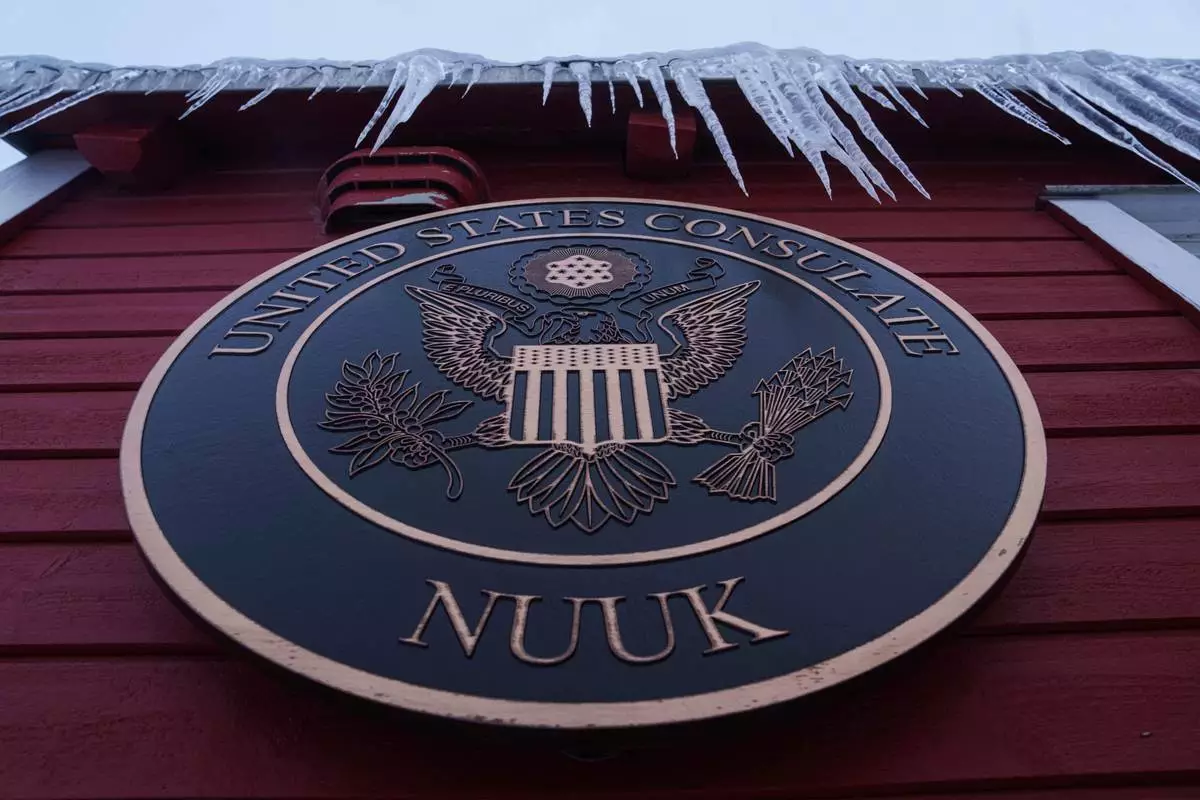
Icicles hang from the roof of the US consulate in Nuuk, Greenland, on Friday, Jan. 16, 2026. (AP Photo/Evgeniy Maloletka)

A Danish serviceman walks in front of Joint Arctic Command center in Nuuk, Greenland, on Friday, Jan. 16, 2026. (AP Photo/Evgeniy Maloletka)
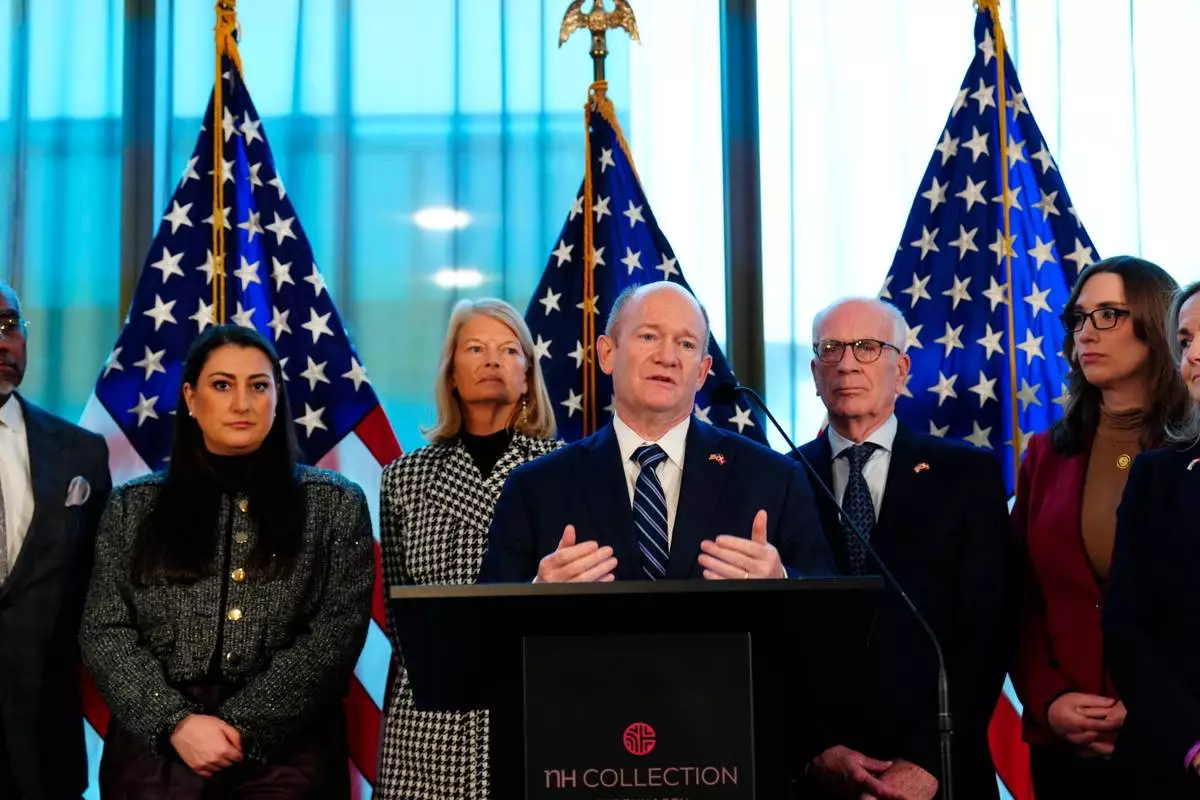
Senator Chris Coons from the Democratic Party speaks during a press conference with the American delegation, consisting of senators and members of the House of Representatives, in Copenhagen, Denmark, Saturday, Jan. 17, 2026. (Ida Marie Odgaard/Ritzau Scanpix via AP)
















